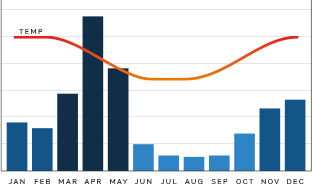Malacca has a hotchpotch of Malay, Chinese, Portuguese, Dutch and British influences that has created a very unique city; like Georgetown, Malacca is a UNESCO World Heritage Site.
Malacca is the birthplace of the Peranakan people; a fusion of Chinese and local Malay which has created a very distinct culture.
Malacca was originally one of the most important ports in Asia due to its location, and at it grew it was of interest to first to the Portuguese, then the Dutch and finally the British, all of whom have helped to shape this incredible city. Just a couple of hours south of KL and a few hours north of Singapore, weekends here can be very busy.
Things to See and Do:
A Famosa, the old Portuguese fortress that once guarded the settlement of Portuguese traders here in the early 16thCentury.
The British destroyed most of the fort when they captured the city, so that all that survives today is the Porta de Santiago - but this provides some sense of Malacca’s rich history.The Stadthuysor Red Square, is a collection of red brick houses built in the Old Colonial Dutch style, and has become a landmark of Malacca. It was originally built for the Dutch Colonial Government, but is n used as the Museum of History with an excellent collection of colonial costumes.
The Cheng Hoon Teng Temple is a Toasist Temple, built in 1645 and conforms to traditional Feng Shui principles. This is an amazing temple to visit, and pays homage to Kapitan China Lee Wei King.
St Paul’s Church was originally built by the Portuguese in 1521 and then taken over by the Dutch and then finally the British. Not much of the original building remains today, but you can see a row of tombstones along one side of the church.
Christ Church is a Malaccan landmark, built on top of a Portuguese Church. Christ Church has the same distinctive red bricks as the Stadthuys, and is still a working Protestant Church today. As you walk around you will see Dutch tombstones on the floor and many examples of the Dutch Coats of Arms.
Malacca was originally one of the most important ports in Asia due to its location, and at it grew it was of interest to first to the Portuguese, then the Dutch and finally the British, all of whom have helped to shape this incredible city. Just a couple of hours south of KL and a few hours north of Singapore, weekends here can be very busy.
Things to See and Do:
A Famosa, the old Portuguese fortress that once guarded the settlement of Portuguese traders here in the early 16thCentury.
The British destroyed most of the fort when they captured the city, so that all that survives today is the Porta de Santiago - but this provides some sense of Malacca’s rich history.The Stadthuysor Red Square, is a collection of red brick houses built in the Old Colonial Dutch style, and has become a landmark of Malacca. It was originally built for the Dutch Colonial Government, but is n used as the Museum of History with an excellent collection of colonial costumes.
The Cheng Hoon Teng Temple is a Toasist Temple, built in 1645 and conforms to traditional Feng Shui principles. This is an amazing temple to visit, and pays homage to Kapitan China Lee Wei King.
St Paul’s Church was originally built by the Portuguese in 1521 and then taken over by the Dutch and then finally the British. Not much of the original building remains today, but you can see a row of tombstones along one side of the church.
Christ Church is a Malaccan landmark, built on top of a Portuguese Church. Christ Church has the same distinctive red bricks as the Stadthuys, and is still a working Protestant Church today. As you walk around you will see Dutch tombstones on the floor and many examples of the Dutch Coats of Arms.


